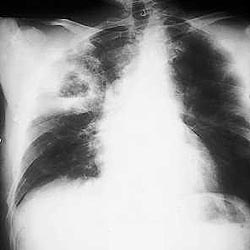Newborns pneumonia lung infection in newborns. Home may be a few hours after birth, and some generalized sepsis syndrome or after 7 days and confined to the lungs. Symptoms may be limited or respiratory failure progress shock and death. Diagnosis of clinical and laboratory evaluation for sepsis. Treatment of initial broad-spectrum antibiotics changed the body a particular drug as soon as possible. Pneumonia is the most common invasive bacterial infection after primary sepsis. Early pneumonia is part of generalized sepsis, which first appears in a few hours or birth. In late-onset pneumonia usually occurs after 7 days of age, often in intensive care unit for children who require prolonged tracheal intubation through lung disease. The organisms obtained from the maternal genital tract or nursery. These organisms include gram-positive cocci (eg, groups A and B streptococci,
) and Gram-negative bacteria (eg,
Spain >> << sp). Methicillin-resistant Staphylococcus aureus

common in later stages of nosocomial pneumonia. In children who strattera 40mg have received broad-spectrum antibiotics, and many other pathogens can be found, including, and. Viruses and fungi cause some cases. In late-onset nosocomial pneumonia may begin gradually, with many selections when absorbed from the endotracheal tube and ventilator settings above. Other children may be acute diseases, unstable temperature and neutropenia. New infiltrates can be seen on chest X-ray, but can be difficult to recognize if a child has severe bronchopulmonary dysplasia. Evaluation includes blood cultures and aspirate the trachea, chest X-ray and pulsoksymetriyi. Because bacterial pneumonia in newborns can distribute a full assessment of sepsis, including lumbar puncture should be done. Antibacterial therapy in early onset disease like that for neonatal sepsis. is the initial treatment of choice for most late-onset nosocomial pneumonia. This scheme refers to sepsis and pneumonia. More specific antibiotic sensitivity change after the results are. General treatment is the same as for neonatal sepsis (see
). Infection with chlamydial organisms during childbirth can lead to the development of chlamydial pneumonia in 2 to 12 weeks. Infants tachypneic but usually not in critical condition and may have a history of conjunctivitis caused by the same body. Eosinophilia may be present, and X-rays show bilateral interstitial infiltrates. Treatment
leads to a rapid solution. The diagnosis of pneumonia secondary to
should prompt evaluation of the mother and her partner, because untreated maternal chlamydial infection can have complications such as pelvic inflammatory disease and infertility. Last full review / revision October 2009, Mary T. Caserta, MD.



